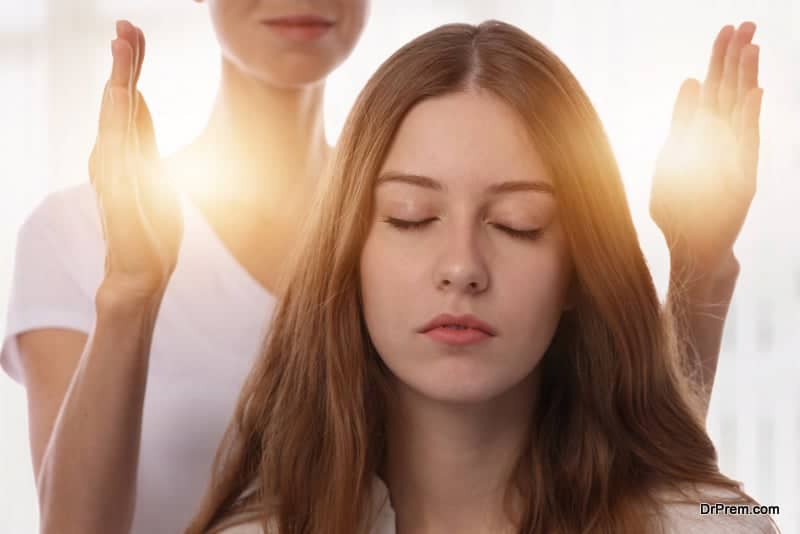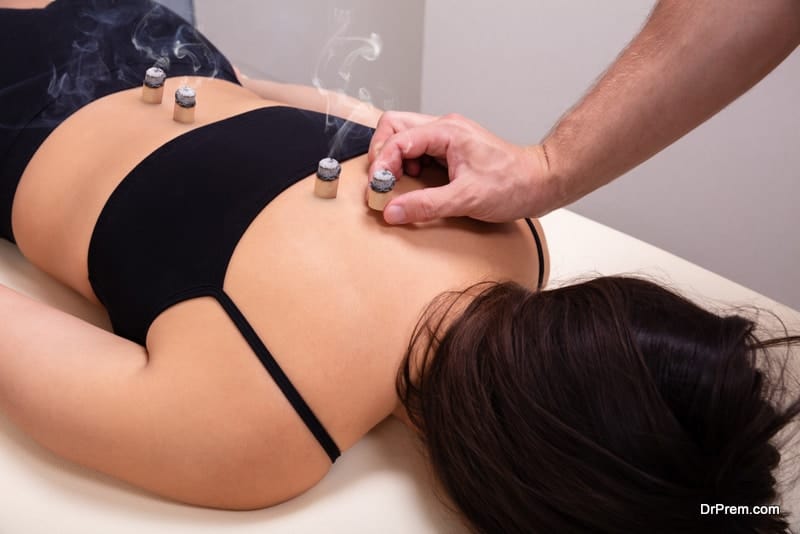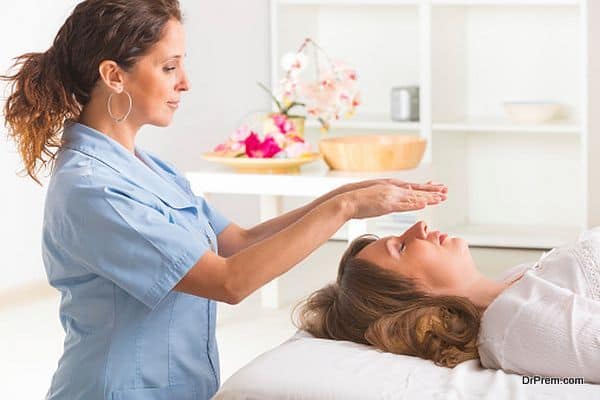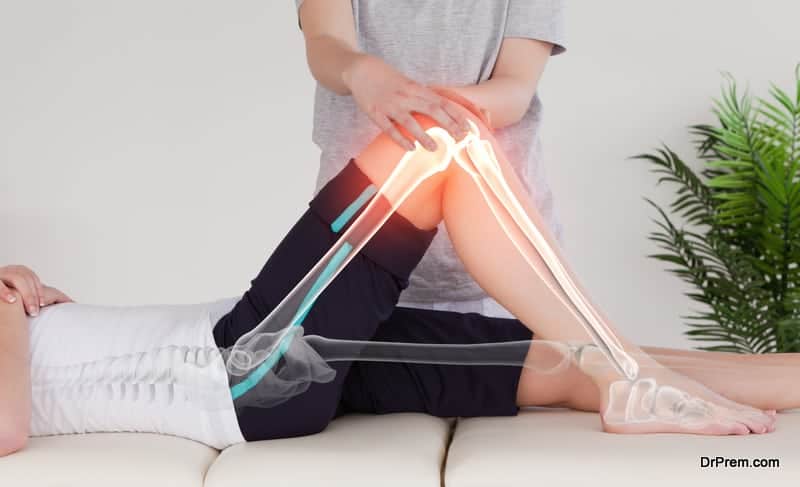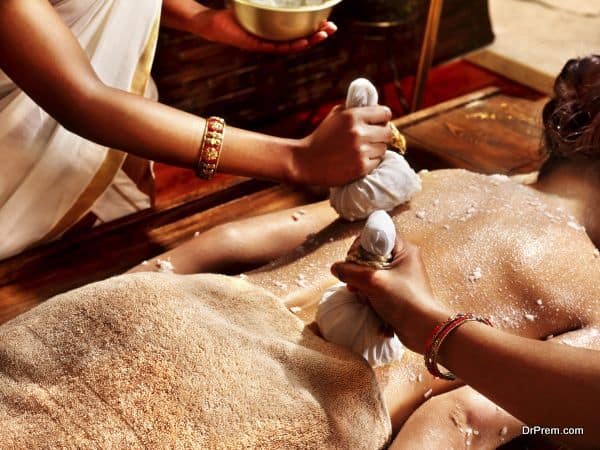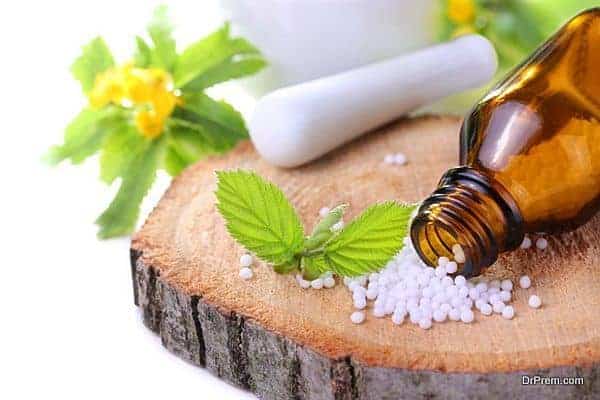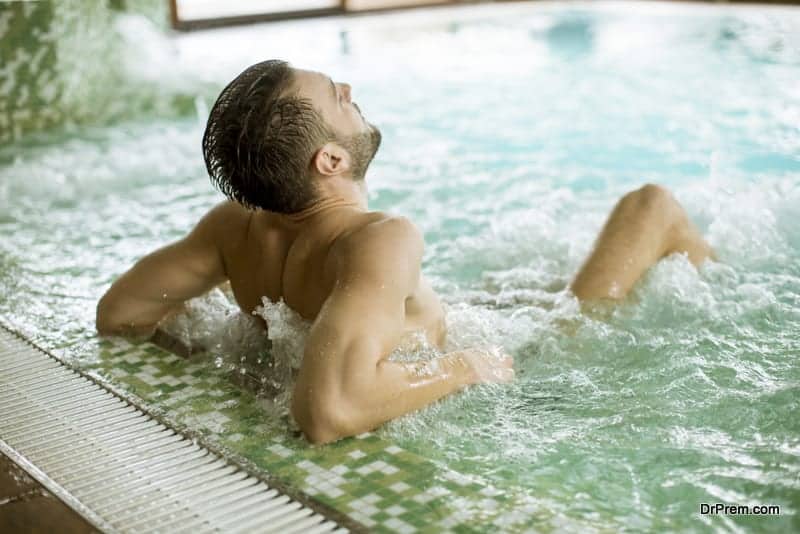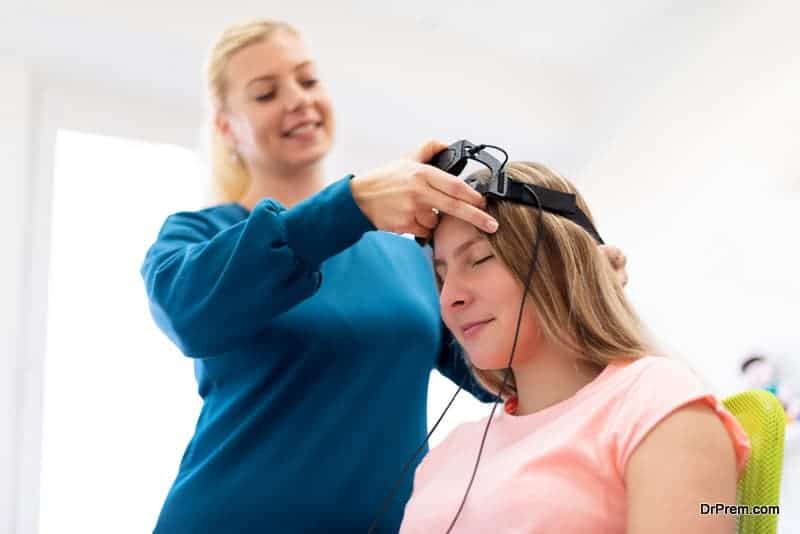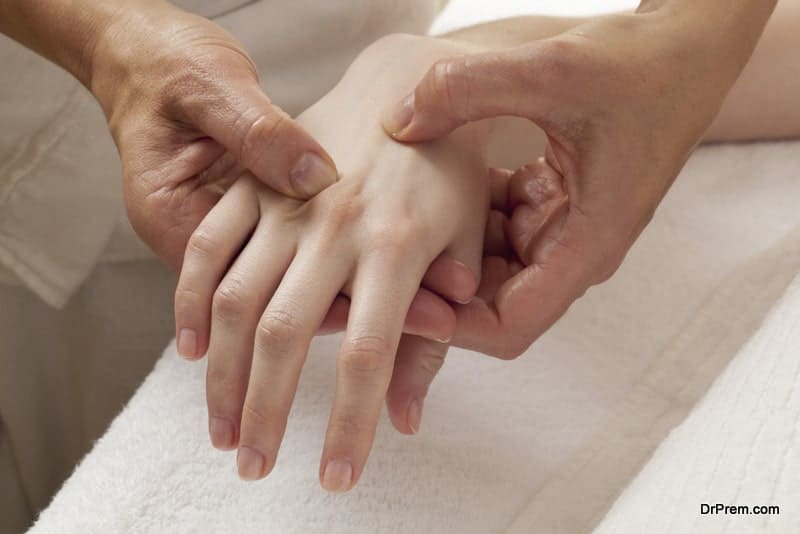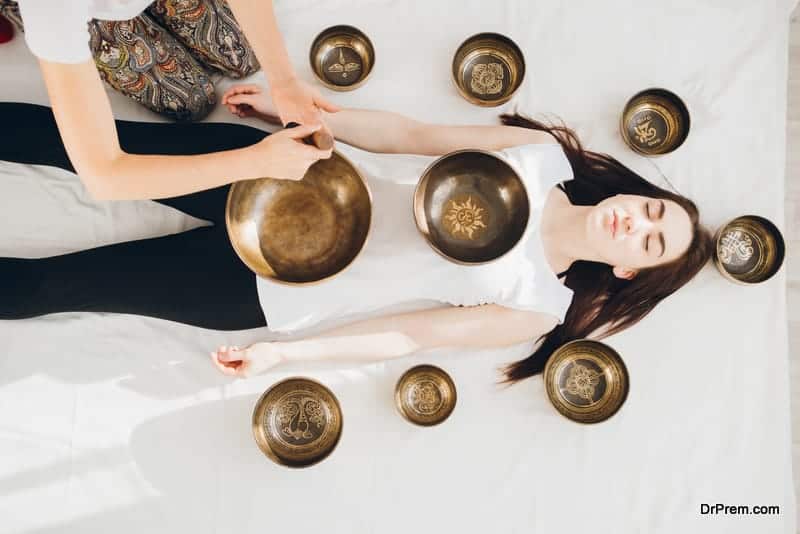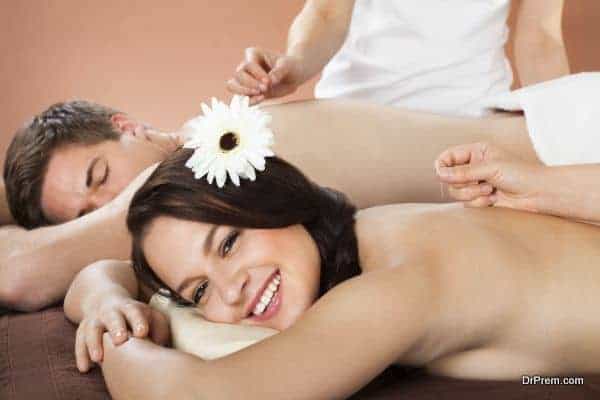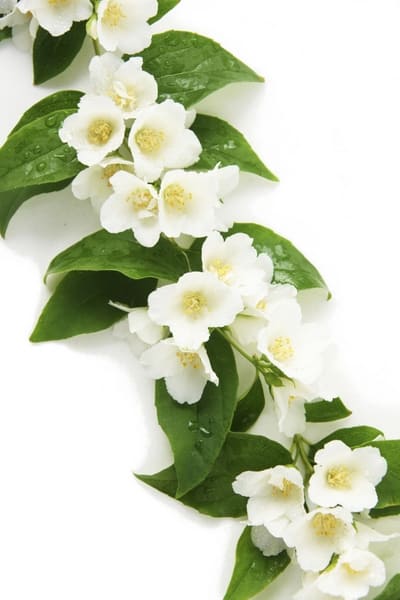Would you ever call a reflexologist to treat your seasonal asthma flares? Or would you prefer a chiropractor for your musculoskeletal pains? It may sound weird, but the demand for various types of traditional alternative medicine is growing. Therefore, understanding both the beneficial and harmful aspects of these treatments is imperative. Over 38% of the Americans have tried some kind of alternative medicine says 2008 NIH data.
Many alternative medicine systems are backed by research and small scale clinical studies. People are relying more on these treatments. There has been a general shift in the treatment approach across the globe. People are rediscovering traditional treatments. Today, they are more aware of their overall wellbeing rather than focusing on physical health.
They have realized the wellness of mind and soul is equally important for sustainable physical fitness. Perhaps, alternative medicine systems are providing better solutions to this than western medicine.
What is alternative medicine?
Alternative medicine refers to any therapy not falling in the line of evidence-based conventional western medicine applications. These are traditional therapies running through generations. Some describe these treatments as ‘integrative’ or ‘complementary’.
Most importantly, alternative medicine does not follow a specific boundary as it is immensely diverse. It takes a holistic approach to cure where lifestyle, diet, heredity and many other internal and external factors are considered apart from the ailment.
Here we have put together a few popular alternative medicine systems making headway to mainstream medicine.
10 beneficial traditional alternative medicine systems:
1. Traditional Chinese Medicine (TCM):
This is perhaps the most widely accepted complementary traditional alternative medicine. Dating back to 200 B.C., this holistic healing system originating in China has evolved through generations in unique forms in Japan, Korea and Vietnam.
In TCM philosophy, our body (health) is governed by two oppositely balancing forces- the Yin and Yang. Yin represents the cold, slow and passive traits while Yang represents heat, excited and active traits. Any disruption or imbalance of the delicately balanced forces manifests in diseases.
The imbalance causes the blockage of life-energy known as Qi (or Chi) flowing through the energy meridians of our body. If Yin- Yang balance gets disrupted, energy flow is hampered, giving rise to various forms of uneasiness and ailments.
TCM practitioners typically apply acupuncture, massage and herbs to unblock the energy in patients and restore the normal Yin-Yang balance. The therapies are subtly personalized to the patient’s requirements. The application tools vary a lot from conventional medicine. The common modalities are:
- Acupuncture
- Moxibustion ( burning of medicinal herbs over the skin of the patient undergoing acupuncture)
- Chinese Materia Medica (listing of herbs and other natural ingredients used in TCM)
- Tui Na massage
- Cupping
- Chinese nutrition
- Tongue diagnosis
These modalities can either be applied singularly or in combination.
2. Energy Therapy:
This therapy is focused on energy fields present in the patient’s body or surrounding it. Therapies included in this category are:
Magnetic Field Therapy: Applying magnetic or electric fields to treat a range of musculoskeletal disorders. Studies show its effectiveness in treating osteoarthritis and other joint pains. Some studies have even shown faster healing of fractures. This therapy is not recommended for pregnant women, those having implanted devices, insulin pumps or medicine patches.
Reiki: This therapy involves tapping of the body’s internal energy to speed up healing. The practitioner moves his/her hands over the body or lightly touches your skin. The aim is to channelize the energy through hands to promote healing. Research regarding its effectiveness is limited.
Therapeutic (Healing) Touch: In this therapy, the therapist utilizes his/her healing energy to treat the patient’s imbalanced energy. The therapist doesn’t touch the patient but moves his/her hands in front and back of the body. It is known to have reduced anxiety in cancer patients enhancing their overall feeling of wellbeing.
3. Chiropractic Medicine:
This therapy is focused on the spine and its functions. The Chiropractor uses different manipulations to bring the spine and other body parts in perfect alignment. The goal is to reduce pain, improve normal functions and facilitate natural healing.
Most of the research on Chiropractic medicine is focused on treating low back pain, but several studies have also shown it to be effective in neck and shoulder pain, headaches and joint pains in upper and lower portions of the body.
4. Naturopathy:
Originating in Europe, naturopathy views disease as the outcome of several alterations in the body processes. It aims to tap the innate healing power of the body allowing healing naturally. Naturopathy, also known as naturopathic medicine is practiced in New Zealand, Australia, the US, Canada and obviously in Europe.
Each country has its own principles of naturopathy treatment. In North America, it is based on the following six principles:
- Nature’s healing power
- Identification of the cause of the disease and its treatment
- The first concept of ‘do no harm’
- The doctor is the teacher
- Treatment of the person as a whole not only the disease
- Prevention
Prime treatment modalities that support the abovementioned principles comprise dietary modification, nutritional supplements, herbal medicine, TCM, acupuncture, hydrotherapy, massage, joint manipulation and counseling of lifestyle.
Naturopathic doctors have training in both alternative and conventional medicine. In a way, naturopathy is one of the complementary traditional alternative medicine systems that allow practitioners to follow combination treatment protocols.
5. Ayurvedic medicine:
Ayurvedic medicine, one of the world’s oldest medicine systems originating in India thousands of years ago is re-emerging as an effective treatment modality. It is widely practiced in India even today. Wellness seekers from other countries crowd Ayurvedic clinics in large numbers. Herbs, special diet, medications from natural ingredients, meditation and yoga constitute the treatment modalities in Ayurveda.
Similar to TCM, Ayurvedic medicine also believes in perfect harmony of mind, body and spirit. Its prime objective is to improve health and not treat disease. In the US, it is recognized as a form of Complementary and Alternative Medicine (CAM).
Ayurvedic practitioners believe all individuals are made of five basic elements available in the universe: space, air, water, fire and earth. All these elements in combination make up three different life forces in our body termed as doshas that control our body functions.
Every individual has all three doshas but one dominates the other two. It is believed, imbalance of doshas increases your chances of falling sick and is responsible for your health condition.
They are:
i. Vata ( space and air)
According to Ayurveda, this is the most powerful of all doshas as it controls the basic functioning of the body. Those dominated by Vata dosha are likely to suffer from heart ailments, asthma, anxiety and rheumatoid arthritis.
ii. Pitta (fire and water)
This is mainly linked to body metabolism. Your digestion capability and appetite are regulated by this dosha. Sour and spicy foods are not recommended in individuals with dominant Pitta dosha. They are likely to develop high blood pressure, heart disease, Crohn’s disease and infections.
iii. Kapha (water and earth)
Kapha controls the built-up of our body that is muscle growth, body weight, strength, stability and immunity. Eating too many sweet foods, daytime sleeping and too much intake of salty and sweet beverages disrupt the life force in individuals with strong Kapha. They are likely to suffer from asthma, breathing disorders, diabetes, obesity, nausea and cancer.
An Ayurvedic practitioner will create a personalized treatment plan based on the individual’s health conditions taking into account his/her mental and emotional state. The treatment is likely to start with detoxification or body cleansing known as Panchakarma. This is meant to treat the symptoms and restore harmony. Next, the practitioner may opt for a massage, herbal concoctions and oils, blood purification and enema or laxatives.
In India, Ayurvedic medicine is applied for treating diabetes, cardiovascular ailments and neurological disorders, but more extensive clinical trials are required to confirm its efficacy in treating these ailments.
6. Homeopathy:
It is one of the common types of traditional alternative medicines with a much higher level of acceptance. You will find more believers in homeopathy than any other kind of alternative medicine. Founded by the German physician, Samuel Christian Hahnemann, this medicine system follows the ‘principle of similarity’ that is symptoms produced by a remedy matches the symptoms of the patient.
He gave repeated doses of remedies to healthy participants and carefully recorded the symptoms generated. This is called the ‘proving’ approach. Based on this data, he developed remedies/treatments by matching symptoms in patients with the drug that produced similar symptoms. Apart from this, Hahnemann also carefully examined other aspects of the patients like his health condition, mental status and even the slightest idiosyncratic behavior.
Effectiveness of homeopathy medicine rest on three factors:
- Proper understanding of the patient’s symptoms factoring in all conditions
- Selecting the matching drug/medicine based on the symptoms
- Thorough understanding of the drug potency
Homeopathy medicine is administered in miniscule doses; therefore skeptics refuse to acknowledge its efficacy. Few high-quality clinical studies showed surprising efficacy of homeopathy medicine. However, there are contradictory results in clinical trials as well. Meta-analyses are yet to declare homeopathy a proven treatment method for any clinical condition.
7. Aromatherapy:
Healing through fragrance is the basis of aromatherapy, a practice that originated 5000 years ago. Nature has gifted us a variety of aroma which we normally get from flowers, foliages and fruits. Essential oils extracted from different plants have a distinct fragrance which if inhaled or massaged can help in healing.
These oils are available in highly concentrated form and therefore are either diluted in carrier oil for massage or inhaled through a diffuser. The goal is to relax stressed nerves and muscles treating chronic pains and certain infections. Some apply aromatherapy for relaxation and anxiety relief.
A 2017, study on aromatherapy found lavender can promote sleep and reduce anxiety in patients with heart diseases. The same year, researchers also found aromatherapy massage with sweet marjoram oil improved sleep in nurses working night-shifts. The massage was followed by drinking a glass of warm water to get the best effect.
In a 2013 study with pregnant women, it was found inhaling linalool (present in mint) and linalyl acetate (present in lavender) helped in calming stressed nerves in minutes. Not all essential oils are suitable for pregnant women and children. Caution should be maintained before application.
8. Balneotherapy:
How many of us consider water as an ingredient for healing? Drinking adequate water is essential for good health but using it for treatment (apart from cold and hot compresses) is not often thought of. However, the use of water for therapeutic purposes known as Balneotherapy can be traced back as far as 1700 BCE. Even today, it is a popular treatment modality as in the thermal springs of Hungary, Turkey and other European nations.
Balneotherapy is based on the concept that water at different temperatures with varied mineral content has the potential to heal a range of skin ailments, pains, inflammations and joint problems and can even facilitate relaxation by relieving stress and anxiety. Drinking water with specific mineral content has proven benefits as well.
Therapists might use specific mud packs, body wraps, douches, long soaks and oils to extract the maximum therapeutic benefits. Studies on Balneotherapy yielded positive results. A 2015 study showed spa treatments combined with exercise helps in reducing lower back pain. The mineral content of spring waters might be immunity-boosting but more studies are needed to confirm it.
9. Biofeedback:
This is a special type of alternative medicine whose techniques permit individuals to control their body functions which happen involuntarily. For example, our heart rate, blood pressure, skin temperature and muscle temperature are involuntary mechanisms. Normally, we do not have any control over it.
But working with a biofeedback therapist, an individual learns specific relaxation techniques and mental exercises that help in gaining the power of controlling involuntary functions. It requires active mind-body participation and regular practice.
In the preliminary sessions, electrodes are placed on the skin to assess body functions. Later on, the techniques can be practiced without the equipment or therapist. These techniques are known to improve conditions like blood pressure, chronic pain and headaches. Research has shown the efficacy of these interventions.
Clinical biofeedback is gaining popularity in the US as many individuals are looking for alternative approaches to healthcare. Although it is not sure how the mechanism works, many people are benefitting from it. Relaxation seems to the main factor of this treatment as most sufferers develop clinical conditions from excessive stress.
Each session makes the individual aware of how he/she is physically reacting to stress and emotions. In this way, one gains control of negating the effects of stress on body and health.
10. Reflexology:
This treatment involves the application of pressure on specific areas of hand, feet and ears which correspond to specific organs and body systems. Applying proper pressure is believed to have a positive effect on the concerned organs helping in improvement of health.
For example, if the therapist aims to improve bladder function, he/she may apply pressure on a specific area of the arch of foot. People apply reflexology as a complementary treatment for cancer, kidney function, diabetes, asthma and anxiety.
Few studies have shown reflexology helps in improving depression and anxiety in patients with cardiovascular disease. It also helps in reducing nausea and fatigue after chemotherapy in cancer patients.
Advantages of traditional alternative medicine systems:
The philosophy and application principles of alternative medicine lead to several benefits. Present age physicians are becoming more open towards it.
Few of the advantages are listed below:
- Treats the cause, not the symptoms. This is one of the prime advantages of traditional alternative medicine. By studying the patient’s nature and symptoms, practitioners can go to the root of the disease.
- Less invasive: The treatment modalities are mostly restricted to massage and oral ingestion of medications and concoctions.
- It is safer: Since the treatment modalities are based on natural ingredients and manual applications, lesser are the chances of side effects often caused by drugs and medications. However, the practitioner should take adequate safety measures in applying natural treatments.
- Maintains a holistic approach: Alternative medicine does not treat a specific ailment but the patient as a whole. The patient’s mental status, lifestyle, nutrition, sleep, and stress are considered during diagnosis and treatment.
- Enables a better quality of life: By taking the holistic route, alternative medicine offers a complete cure in all respects without much pain. This automatically improves the quality of life.
- Offers flexibility in treatment: This is another advantage where treatment plans can be altered depending on lifestyle changes.
- Less dependency on medications: Many conventional medications create dependency, inviting further health hazards. This is rare with alternative medicine.
- Less costly: Many traditional medications are less expensive as they can be easily prepared with naturally available ingredients.
Weighing the cons
Everything comes with its pros and cons. Thus, you should evaluate the benefits and risks before you take up any form of alternative medicine to heal yourself. Additionally, not all treatments are risky. For example, acupuncture is a technique used by Chinese practitioners. It is probably the most scientifically proven alternative medicine treatment for pain and other medical conditions. It is proven to give you relief from various different types of pain, such as neck pain, headache, chronic back pain, chronic migraine, etc.
However, it is suggested that acupuncture can sometimes cause infection or nerve damage. This could happen due to wrongly placed or unsterilized needles. On the other hand, experts suggest that such risks are quite low and acupuncture-caused damages are reversible.
If you go for herbal treatment, you have to be more careful. Finding a qualified doctor to give your herbal medicines is very essential. Even though herbal medicines are considered safe and free of any side effects, the results of taking an inappropriate herbal medicine can be as severe as being poisoned or having bad allergic reactions. If you are given an overdose of any herbal medicine, it could be highly risky. Thus, prescriptions have to be accurate for you to consume any herbal product. If you look at the positive side, herbal medicines can treat various medical conditions that are not even possible to be treated by conventional medicines. This can be done without any side effects that regular pharmaceuticals generally leave behind.
There are also various types of massages, exercises and meditation practices in alternative medicine. These practices are of great benefit for the treatment of several physical and psychological problems. However, even these have a chance of pulling a muscle or receiving an injury if improperly done. Some alternative medicines are not even scientifically proven beneficial. Thus, risks always exist along with the benefits. You have to decide to take all required precautions while following any particular type of alternative medicine treatment.


